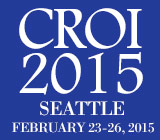 Baby boomers with hepatitis C virus (HCV) have high rates of advanced liver fibrosis and cirrhosis, aidsmap reports. Researchers analyzed hep C testing and liver function test data from Quest Diagnostics to estimate the range of liver damage among those living with the virus during 2010 to 2013. They reported their findings at the 2015 Conference on Retroviruses and Opportunistic Infections (CROI) in Seattle.
Baby boomers with hepatitis C virus (HCV) have high rates of advanced liver fibrosis and cirrhosis, aidsmap reports. Researchers analyzed hep C testing and liver function test data from Quest Diagnostics to estimate the range of liver damage among those living with the virus during 2010 to 2013. They reported their findings at the 2015 Conference on Retroviruses and Opportunistic Infections (CROI) in Seattle.
Out of 9.8 million records, the researchers identified 273,207 people whose hep C RNA test was positive. Within that group, 125,290 had a registered birthday and three test results of alanine aminotransferase (ALT), aspartate aminotransferase (AST) and platelet count, and were thus included in the analysis. The researchers used the ALT, AST and platelet tests to estimate a FIB-4 score, which designates the severity of liver damage. A total of 186,741 of the HCV-positive people identified (68.2 percent) were born between 1945 and 1965, which makes them baby boomers.
Among all age groups, 35.5 percent had mild-to-moderate fibrosis, while 22.4 percent had severe fibrosis, 18 percent had cirrhosis, and 19.5 percent had little or no fibrosis. Among the baby boomers, a respective 39.2 percent, 26.2 percent, 21.1 percent and 9 percent had moderate fibrosis, severe fibrosis, cirrhosis, and little or no fibrosis.
The FIB-4 scores did not vary significantly over the period of the study, suggesting that recent calls for expanded testing among the baby boomer population has not succeeded at identifying cases earlier in the course of the disease.
To read the aidsmap story, click here.
To read the conference abstract, click here.
To view a webcast of the conference presentation, click here.
High Rates of Advanced Liver Damage in Hep C-Diagnosed Boomers






Comments
Comments